SOUTHLAND TALES (2006)
During a three-day heat wave before a huge 4th of July, an action star with amnesia meets up with a porn star developing her own reality TV project, and a cop who holds the key to a vast conspiracy.
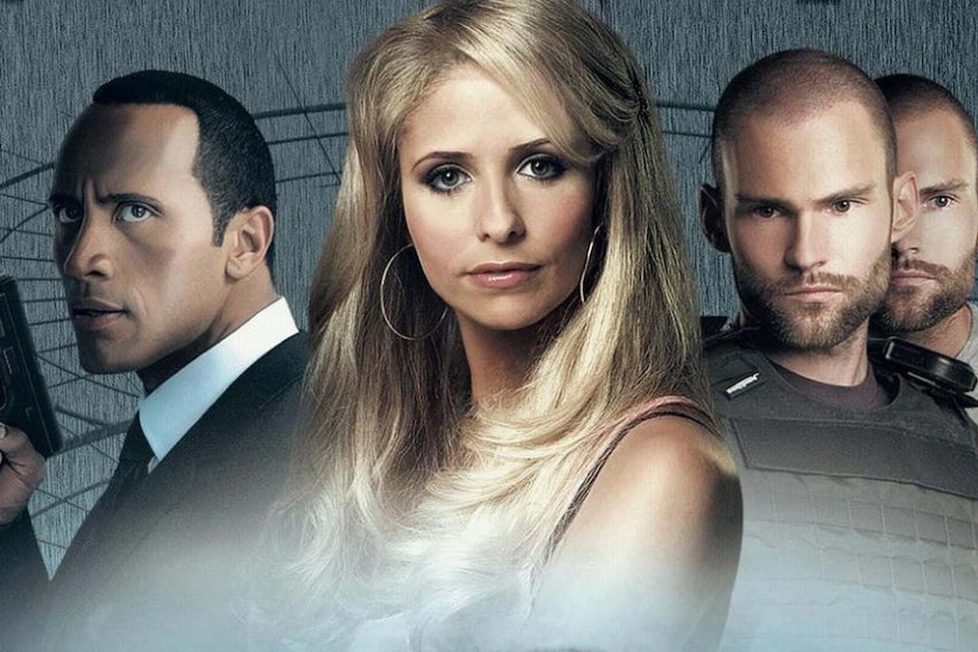
During a three-day heat wave before a huge 4th of July, an action star with amnesia meets up with a porn star developing her own reality TV project, and a cop who holds the key to a vast conspiracy.


‘This is the way the world ends. Not with a whimper, but with a bang.’ This inverted line of T.S Eliot’s The Hollow Men is spoken more than once in Southland Tales. The subversion of those classic words is, to some degree, a bombastic underlining of the apocalyptic tone that Richard Kelly’s film strikes; but under a more self-aware light, it also describes what would happen to his career after Southland Tales‘ release. Such a smart director must have known, deep down, that he was making a film to make the studio weep, as they watched their $17M obliterated in a mushroom cloud. The film’s dizzying confidence suggests that Kelly knew exactly what he was making: a sprawling, fiercely individualistic and surreal piece of art, presented as a nightmarish parody of its time and designed to provoke its audience into either hating it, or wondering what the meaning of life in the 21st-century might be. If the studios loved it, then would mean he didn’t do his job.
Southland Tales was a film almost nobody could comprehend. Roger Ebert described its Cannes premiere as disastrous, and critics weren’t much kinder when the film was released everywhere else—grossing just $374,000 at the worldwide box office. Since then, Richard Kelly’s made just one other film, The Box (2009), which barely broke even and is largely forgotten. Undoubtedly, Kelly’s debut Donnie Darko (2001) is remembered best. Though an initial flop, the film experienced a rebirth as a fan-favourite on DVD, and you’d be hard pressed to find a list of ‘cult classics’ that doesn’t feature Donnie Darko in its ranks. Now, with Arrow Video’s superlative new release of Southland Tales (they also released Donnie Darko in 2017), and a small but passionate contingent of fans and critics naming it a misunderstood masterpiece, it’s worth considering that Southland Tales didn’t end with a bang or a whimper, and might never have ended at all.
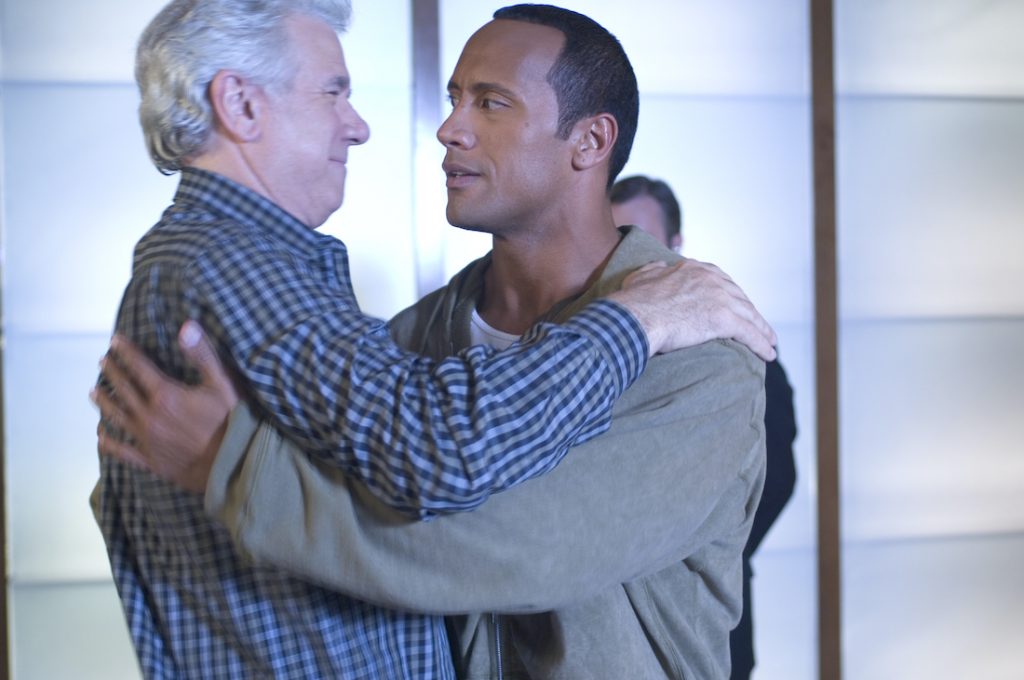
To describe the plot of Southland Tales would be a Herculean task, and even then, it’d somewhat miss the point of the film. But, to offer a quick précis: set in the then-near-future of 2008, Southland Tales follows an amnesiac Hollywood actor called Boxer Santeros (Dwayne Johnson), who might also be a character in the screenplay he’s written, which appears to be a prophetic text predicting the future. His co-writer, Krysta Now (Sarah Michelle Gellar), is an adult film star turned entrepreneur, with connections to a neo-Marxist cell who’ve kidnapped Officer Ronald Taverner (Seann William Scott), with the intention of having his supposed identical twin brother, Roland (Seann William Scott again).
Meanwhile, a scarred war veteran, Pilot Abilene (Justin Timberlake), sits watching events from afar through the scope of a sniper rifle; providing the film’s narration, exposition, and Bible quotes. He tells us that America is barely surviving World War III, and with its fuel depleted, it turns to a nefarious energy company who’ve harnessed the power of the ocean to fuel perpetual motion and a sustainable energy. A new drug called ‘liquid karma’ and rips in the space-time continuum are some of the side effects of their experiments. And that’s the plot in a nutshell.
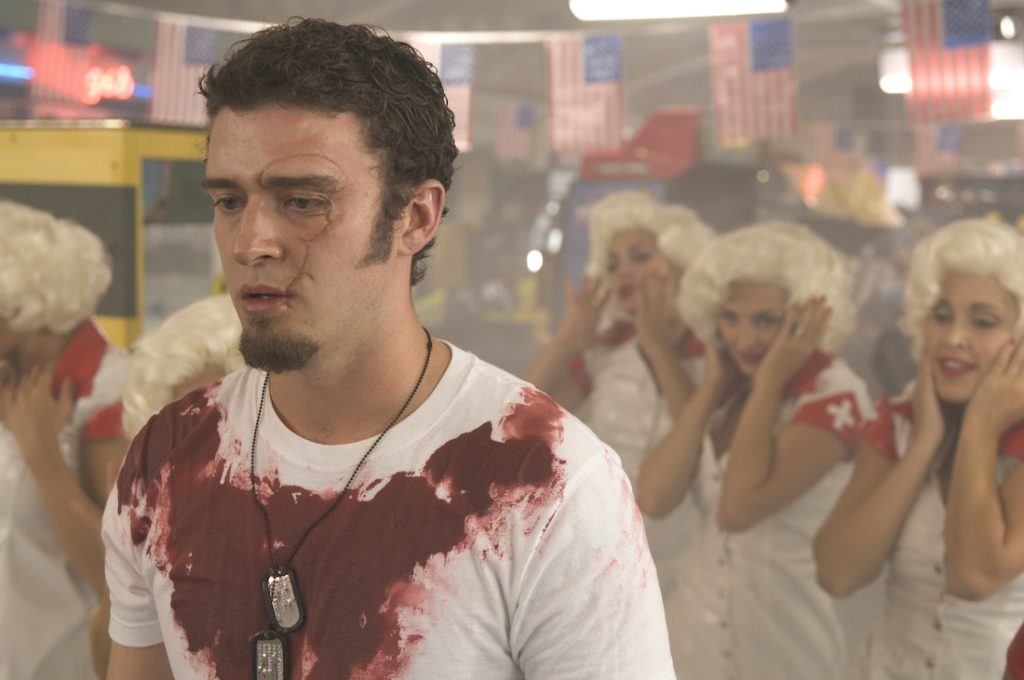
A synopsis like this might lead a person to wonder how a director makes a clear portrait from threads as sprawling as these. The answer is, of course, he doesn’t. Kelly doesn’t approach the story with neatness in mind, nor comprehensibility. He’s instead something of a mad, raving scientist shouting formulas and equations at you—or, at least, he’s good at pretending to be that. You see, underneath Southland Tales’ flights of fancy and seeming non-sequiturs, you have a director who’s keenly aware of what his film is doing: it’s reflecting the endless onslaught of the media that became all-consuming in the early-2000s.
The 24/7 news channels were still relatively new in 2006, as was reality TV, which promised to bring you closer to real life than actual life could ever manage. Advertising continued its mission to convince you that consumerism could make you happy, and offer you yet still newer realities: ones in which you have the car you need to fulfil your dreams. Meanwhile, those advertisers sponsored reality shows, which were advertised in ad breaks during the news, which featured celebrities who’d fly off to USO Shows which in turn were sponsored by the brands who…. and the cycle continued. An endless military-industrial-media complex became something that you could half-watch while happily eating your cereal in the morning.
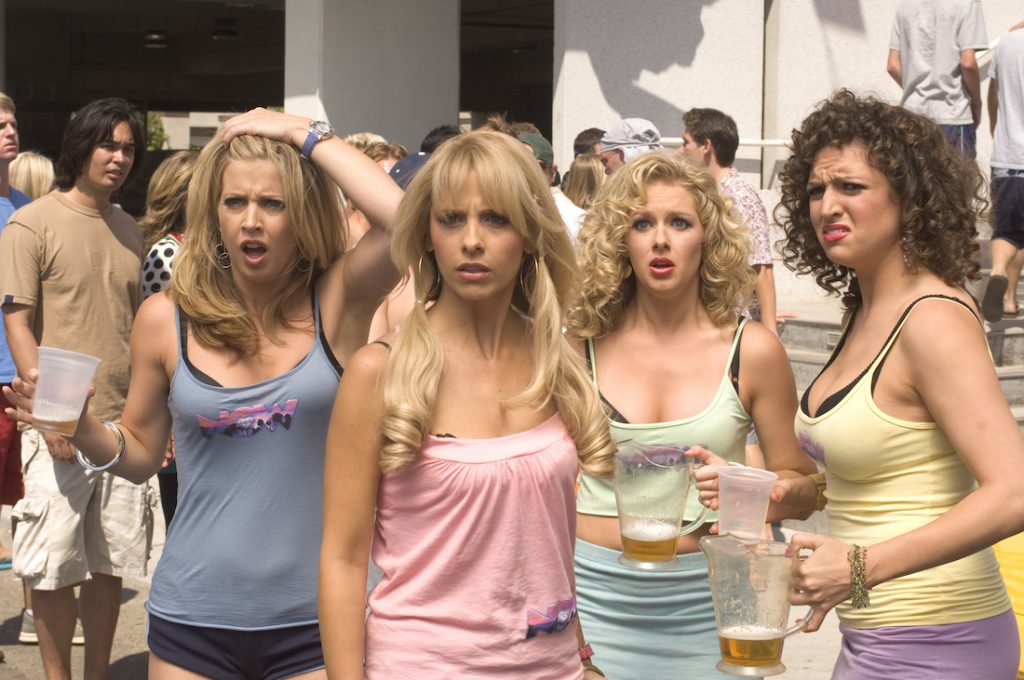
Everything had a dual identity: celebrities became your friends via reality TV, and then became proud spokespeople of brands, and the government, and the military. Bruce Willis wanted to fly off to fight for the vague concept of American Freedom in Iraq. Arnold Schwarzenegger became the Governor of California, bringing to public mind the image of the government as some muscle-bound action hero. The short memories of people who consider the last few years of US politics uniquely bizarre and unprecedented would benefit from remembering the Bush years!
Southland Tales has a dual role, too. It’s a hilarious parody of its era, but also a moment of horrified clarity; the moment of waking from a bad dream and trying to piece together the fragments of what happened, terrified of what’s to come next. It’s funny that Boxer and Krysta wrote a a script that predicted the future, because Southland Tales foretold so much of what was to come, and none of it was good. The film is populated with police shootings caught on camera, cults of personality spreading further than thought possible (thanks to the internet), and grotesque big-tech billionaires whom we’re told we owe our lives to.
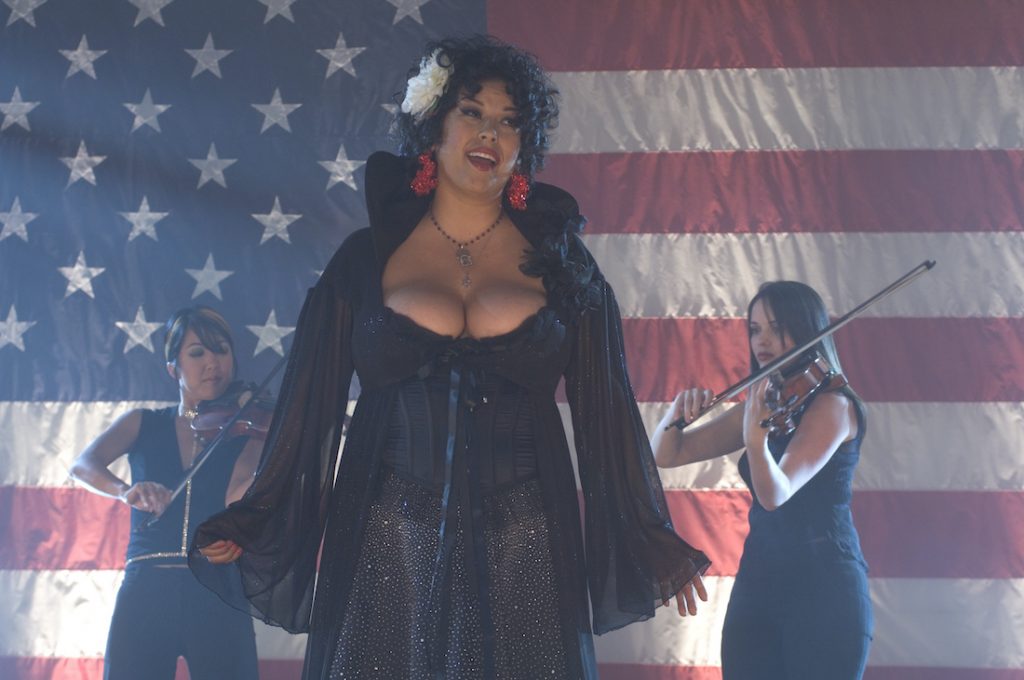
In the film, the earth’s rotation is slowing by a fraction of a fraction of a mile per hour, caused by the energy company’s abuse of the oceans. And so, literally, everything feels a bit off. That speaks to the film itself, which feels so closely linked to what was actually happening that its ‘version’ of America feels only just slightly removed from reality. The government’s PATRIOT Act in the film is developed into something called ‘US-Ident’, which monitors citizens largely via the internet, while the police roll out their ‘UPU’ teams—which stands, horrifyingly, for ‘Urban Pacification Unit’.
All of Kelly’s prescient depictions of a divided nation would alone make Southland Tales a fascinating viewing experience. But as much as he’s an experimenter, plucking ideas and images from the ether and concocting heady spirits from them, he also has the uncanny ability to strike moments of profound emotion. It’s this emotion that makes Southland Tales a work of genius; in its bizarre, parallel world, we miraculously recognise that feeling that occurs when we hear terrible news, when we feel spiritually lost, and overwhelmed by modern life. It’s a hyper-specific feeling that the film presents, but when it does, it all suddenly seems to make sense.
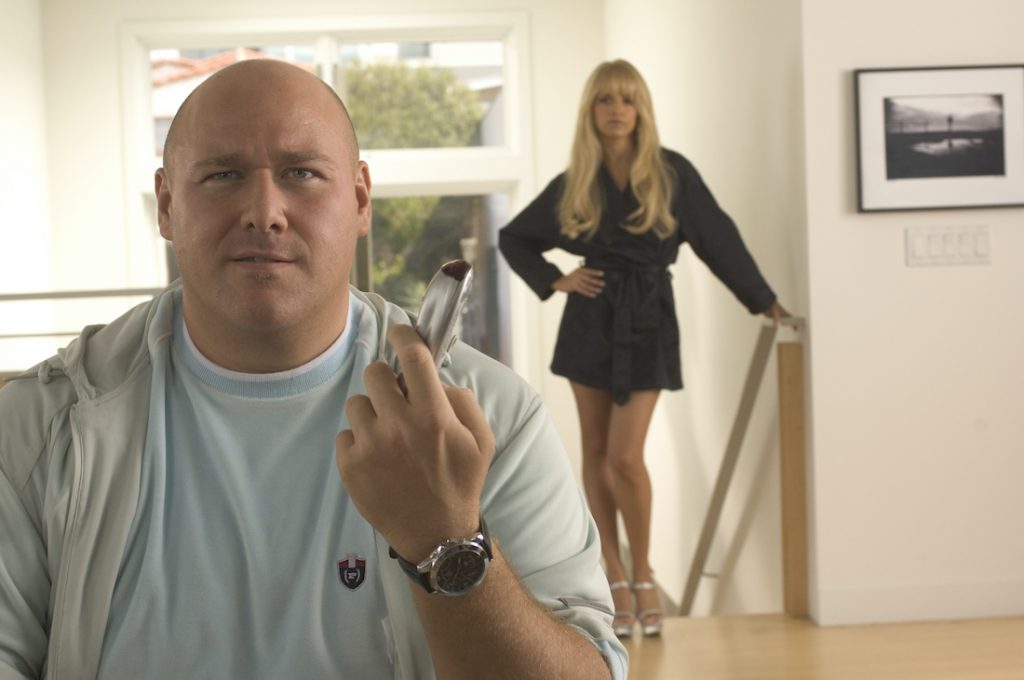
The finest example of this clarity comes during a drug-induced dream-sequence, in which Pilot, wearing a blood stained T-shirt, dances and lip-syncs to The Killers’ “All These Things That I’ve Done”. As he stumbles through an arcade, Rockette-style dancers in army nurse uniforms kick and spin, with a great, big US flag as their backdrop. As the song ends, Pilot is drunken before us and covered in beer, looking ruefully as he perhaps considers the things he’s seen at war, or in his own country. He pours budweiser over himself, literally to drown his memories. But he can’t forget. It brings to mind the final scene in the film Kids (1995), when a character wakes up from a night of debauchery and asks: “Jesus Christ, what happened?”
Kelly’s moments of emotional lucidity are when the absurdity of the situations are transcended—or, perhaps, it’s the absurdity that makes it all the more potent. The movie, like reality, becomes so exaggerated that any emotional truth in it feels like a port in a thunderous storm. This might explain why another of the film’s most moving scenes occurs between two clones in a floating ice cream truck.
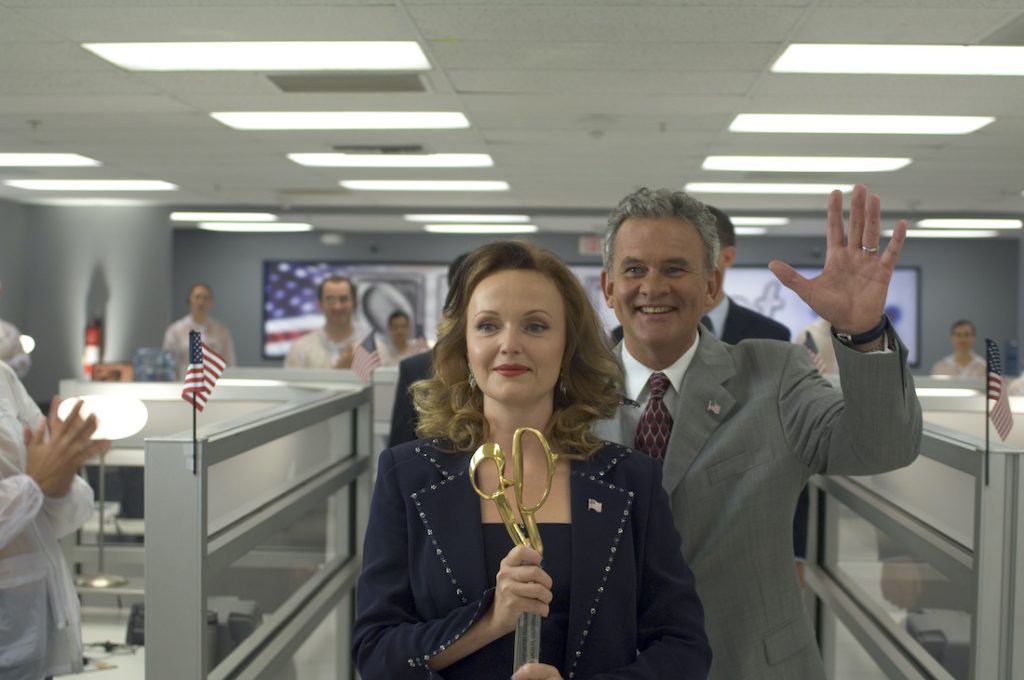
There’s also a broad comedy to it all. It often has a gleeful silliness, making it something of a spiritual grandchild to Stanley Kubrick’s Dr Strangelove (1964), particularly in its slapstick doom-mongering—which is amusing until it isn’t. Often, its characters are just as arch and symbolic, and peppered with bizarre quirks. It’s doubtlessly Dwayne Johnson’s best and most idiosyncratic role, at points seeming to be a self-parody of his action star persona, before his character descends into the anxious ticks of a cartoon, tapping his fingers together in nervous uncertainty. Somehow he manages to work a vulnerable sweetness into it as well. Meanwhile, the secondary cast seem to be populated by Saturday Night Live alums, with Amy Poehler and Cheri Oteri as agitprop provocateurs, and Jon Lovitz as a growly-voiced, bleached-blonde cop (in a parody of that most disturbing of reality shows, COPS). Also, Kevin Smith turns up in old-man makeup, and Eli Roth has a blink-and-you’ll-miss-it cameo in which he’s shot to death, fittingly, on a toilet.
Kelly’s humour gives the film a levity, and it’s also is the method through which he plays a game of one-upmanship with reality. With the preposterousness of the news and media cycle of the time, Southland Tales necessarily heightens reality in the manner of parodists before it. Though seemingly incongruous, Team America: World Police (2004) might even make for a strangely fitting double bill of mid-’00s jingoism-parodies with Kelly’s film. (There’s even plenty to talk about in terms of Southland Tales being one big parody of action movies, but that’s another article…)
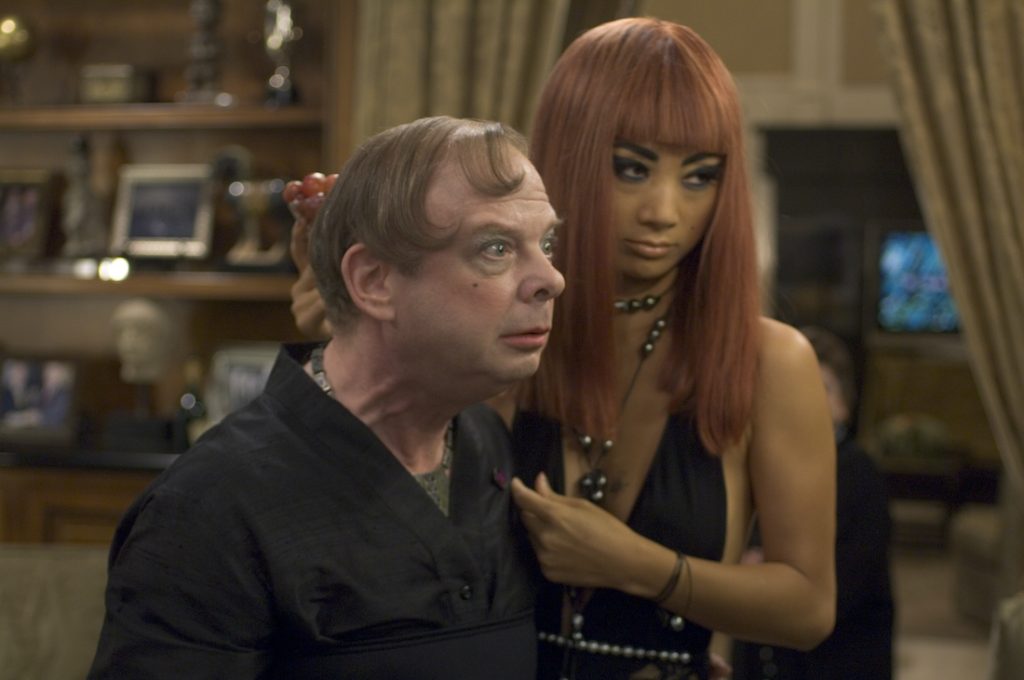
And, of course, like the best comedies, it’s the pain at the core that makes it so sharp. No better is the pain displayed than on the face/s of Ronald and Roland. Seann William Scott’s remarkably sweet performance as brutal hockey enforcer in Goon (2011) feels like it was born with his work in Southland Tales. Gone is the brash motormouth that made him a star in American Pie (1999), replaced with a wounded and frightened naivety. He looks tough, but it’s plain as day that he knows something is very, very wrong in the world. And so do we.
In Donnie Darko, the people of the town each wake up in the middle of the night, feeling like something’s disappeared… whatever it might be. They might not know what, but a change has occurred and a thing that was once true is gone, into the night. Southland Tales is that scene writ large, on a nationwide canvas. It’s a country that tried to manifest destiny, a country that thinks it can be great again—that thinks it was great, once—reaping what it sowed. It’s a country as a machine, chewing up people and resources on one side and spitting out product on the other. The world is ending in Southland Tales. But this is open to interpretation. The end of the world, as the film suggests, might come when we find a spiritual purpose, and connect with a deeper—or better—version of ourselves. If there’s a duality to everything, maybe there is a better version of us to be found. And maybe that unity won’t end the world, but will end the world as we know it, and we’ll no longer rely on what we buy and who we vote for to give us meaning.
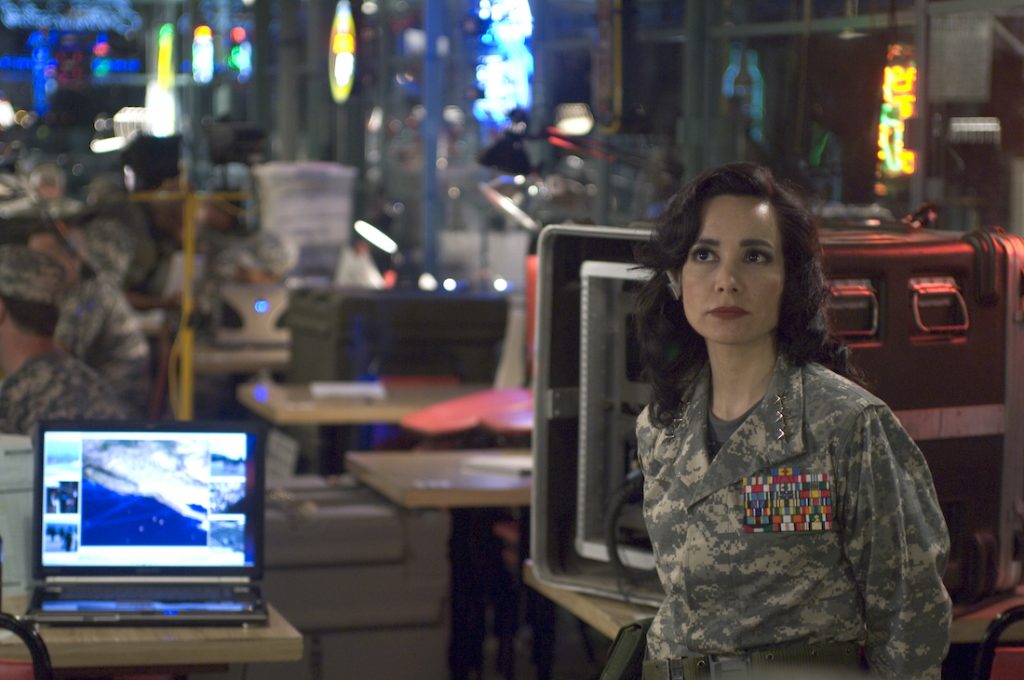
It may have made him a Hollywood outcast, but it’s hard to imagine Richard Kelly regretting making Southland Tales. It’s a wild and entirely unique film, the kind that you should see twice. Not necessarily to understand more about the plot, but rather, because the second time you’ll realise you’d watched it all wrong the first time. Like Inherent Vice (2014), or even Twin Peaks: The Return (2017), the convoluted tapestry of Southland Tales isn’t meant to be understood entirely…. it’s meant to be felt. Granted, many hours can be spent reading up on the film and researching backstories or watching long-winded explainers. It can be that kind of film if you want it to be, and that’s another of the film’s beautiful dualities: it’s either a trip or a puzzle. A perfect encapsulation of the time, or a bizarro meta-comedy. Genius, or utter drivel. Perhaps it’s all these things! Whatever it is, it’s a bang and not a whimper.
FRANCE • GERMANY • USA | 2006 |145 MINUTES • 160 MINUTES (CANNES CUT) | 2.35:1 | COLOUR | ENGLISH

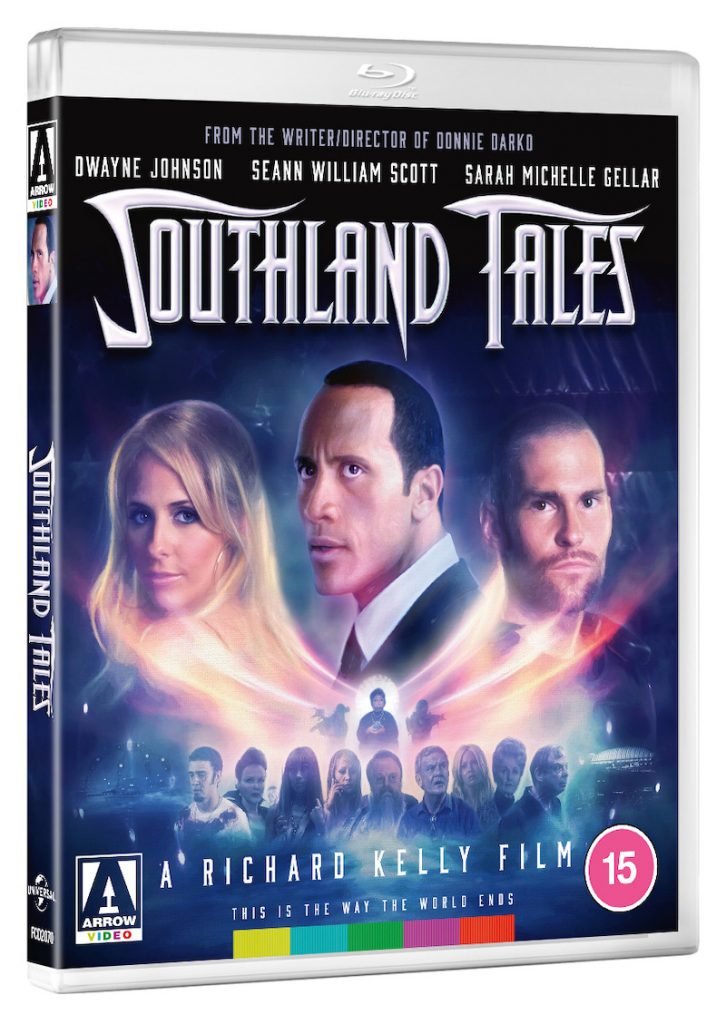
It’s a shame this isn’t one of Arrow’s recent 4K Ultra HD releases, and at some points the disc’s lack of clarity and sharpness is notable. However, it still does look as good as it has ever done in this 2K restoration, and the DTS-HD 5.1 Master Audio is superb. The film has incredibly layered audio mastering, and with this sound mix, the competing voices of news stations and overlapping dialogue is powerful. The film’s soundtrack sounds particularly good—-Pixies’ “Wave of Mutilation (UK Surf)” is a needle drop that doesn’t fail to give goosebumps.

writer & director: Richard Kelly.
starring: Dwayne Johnson, Seann William Scott, Sarah Michelle Gellar, Mandy Moore, Justin Timberlake, Miranda Richardson, Wallace Shawn & Bai Ling.
